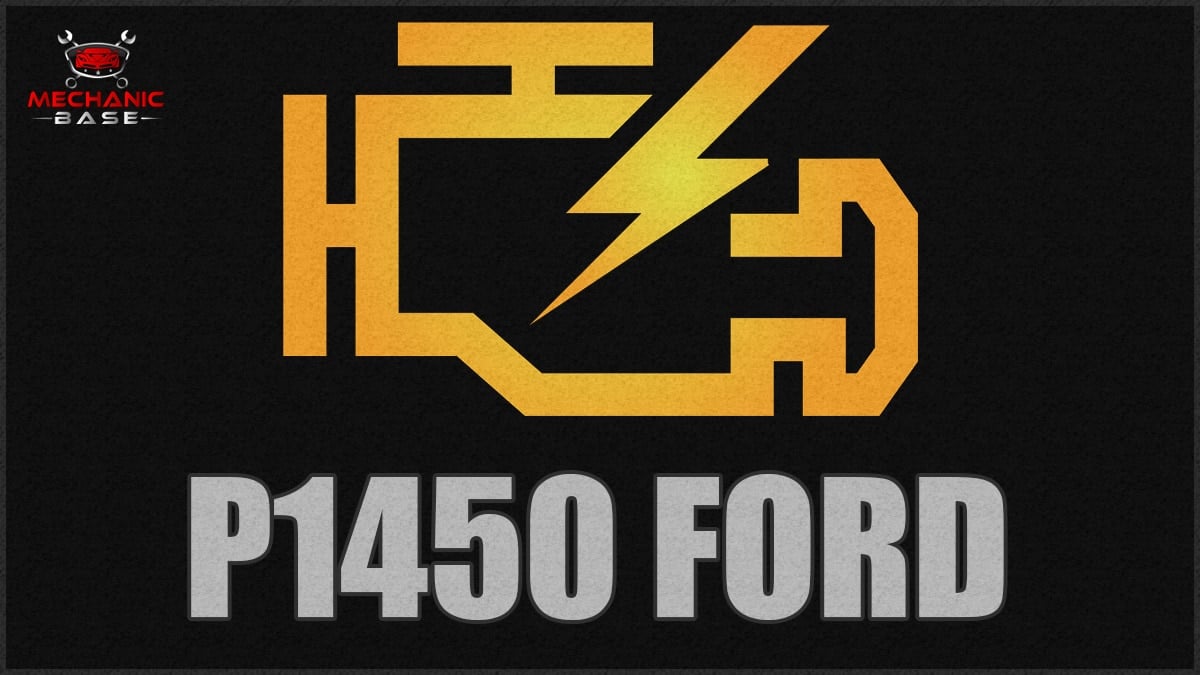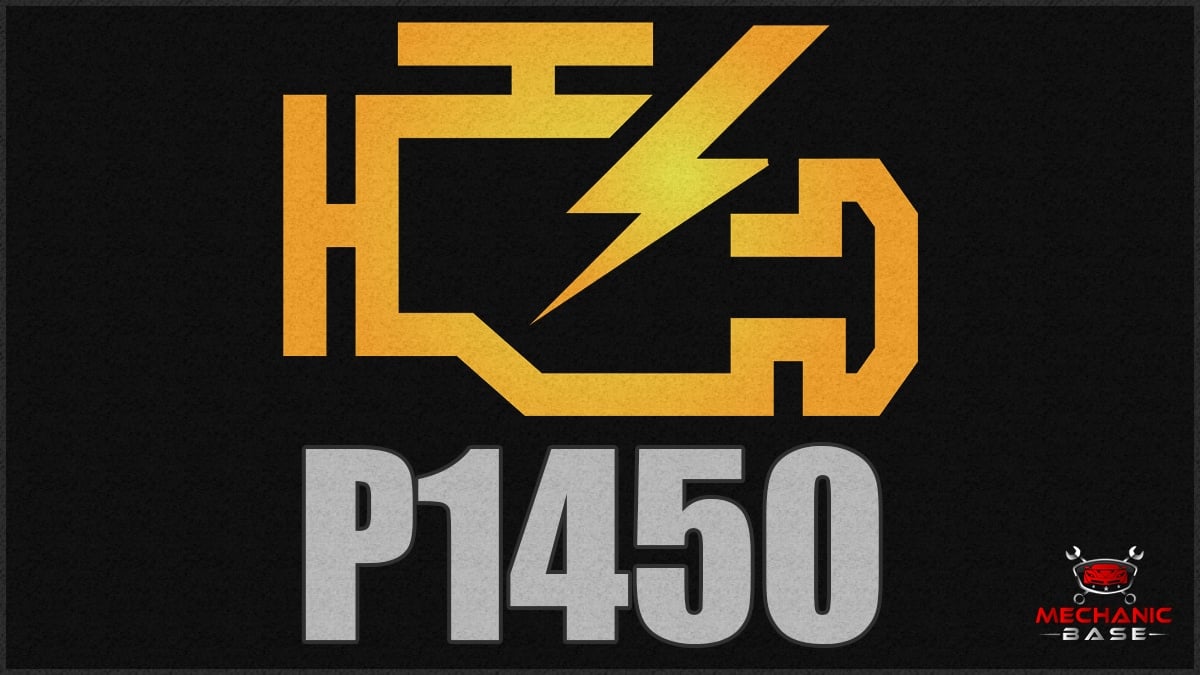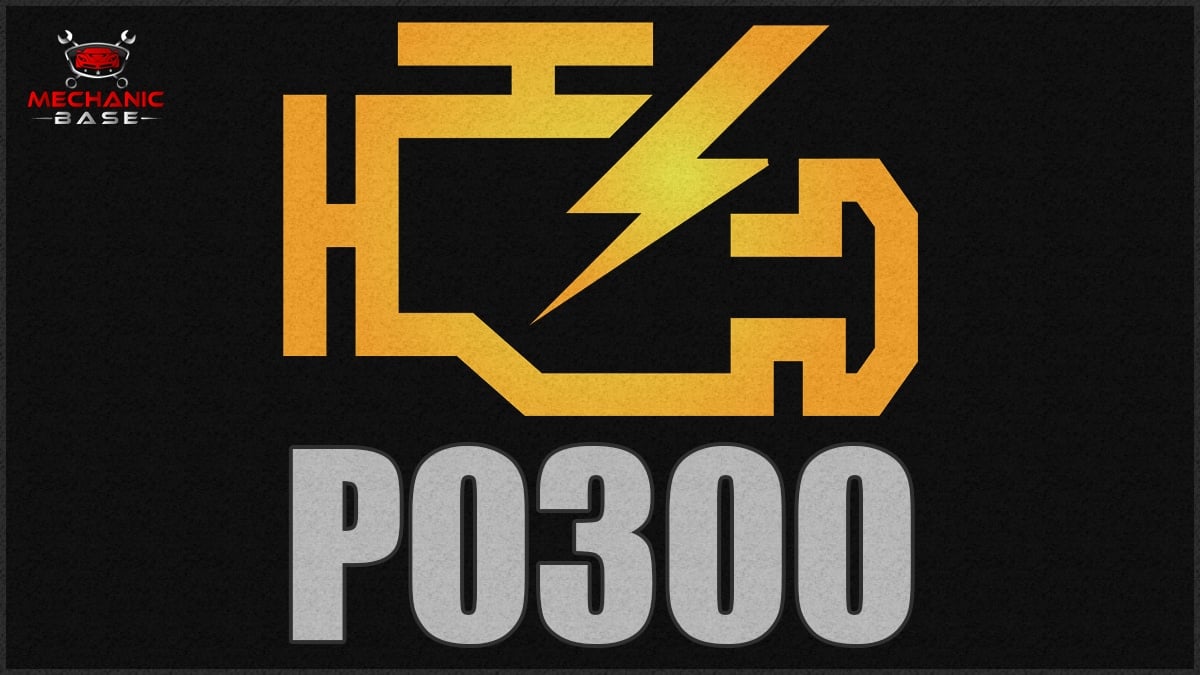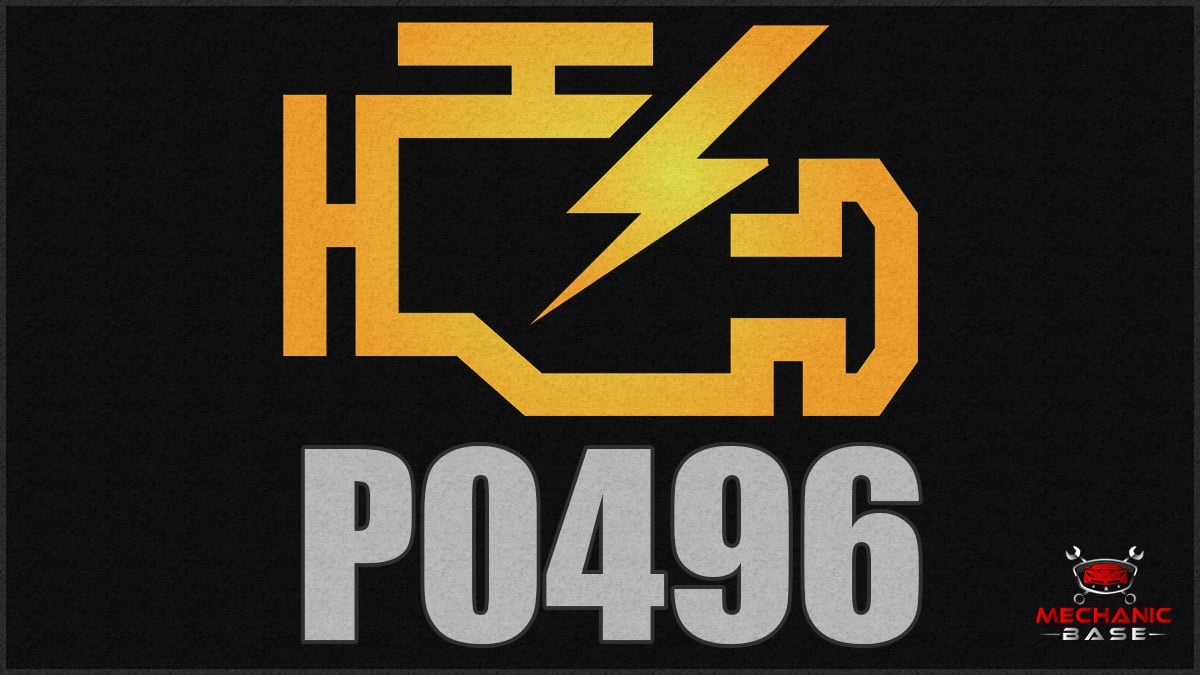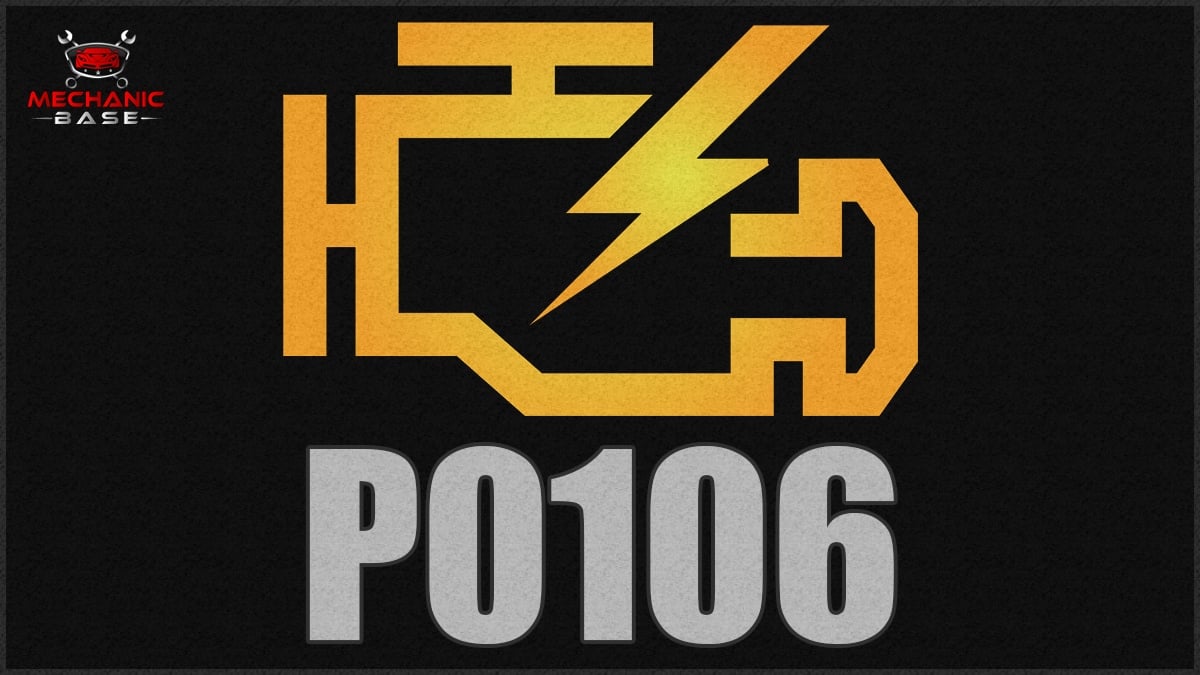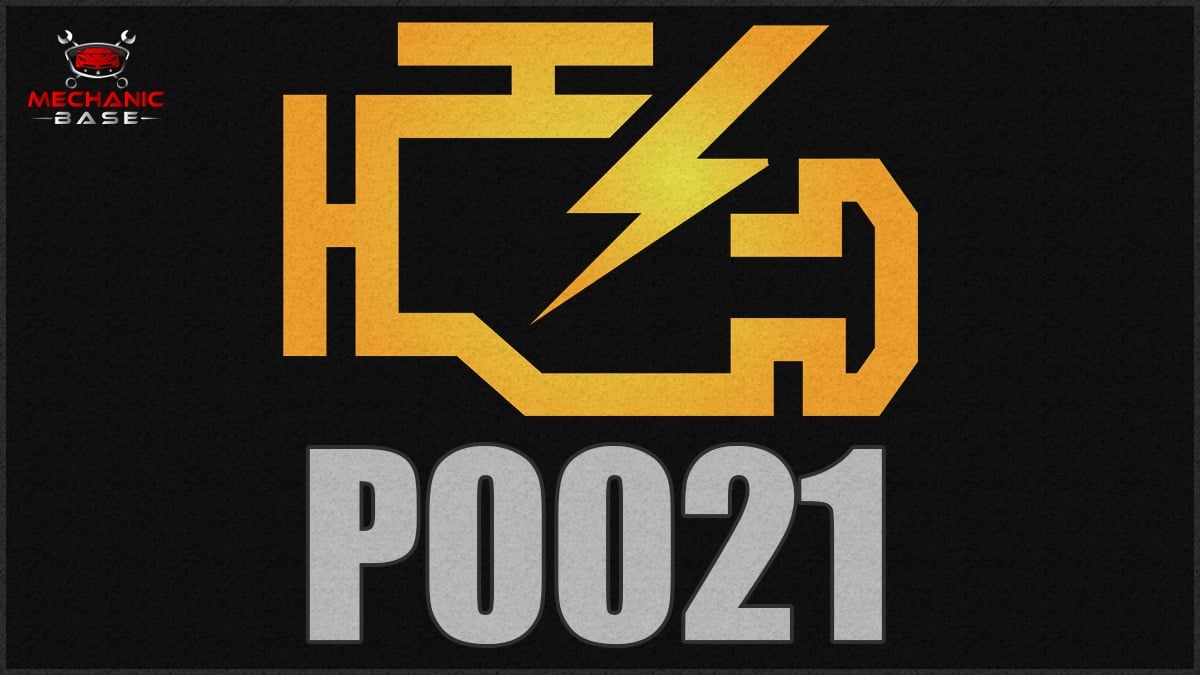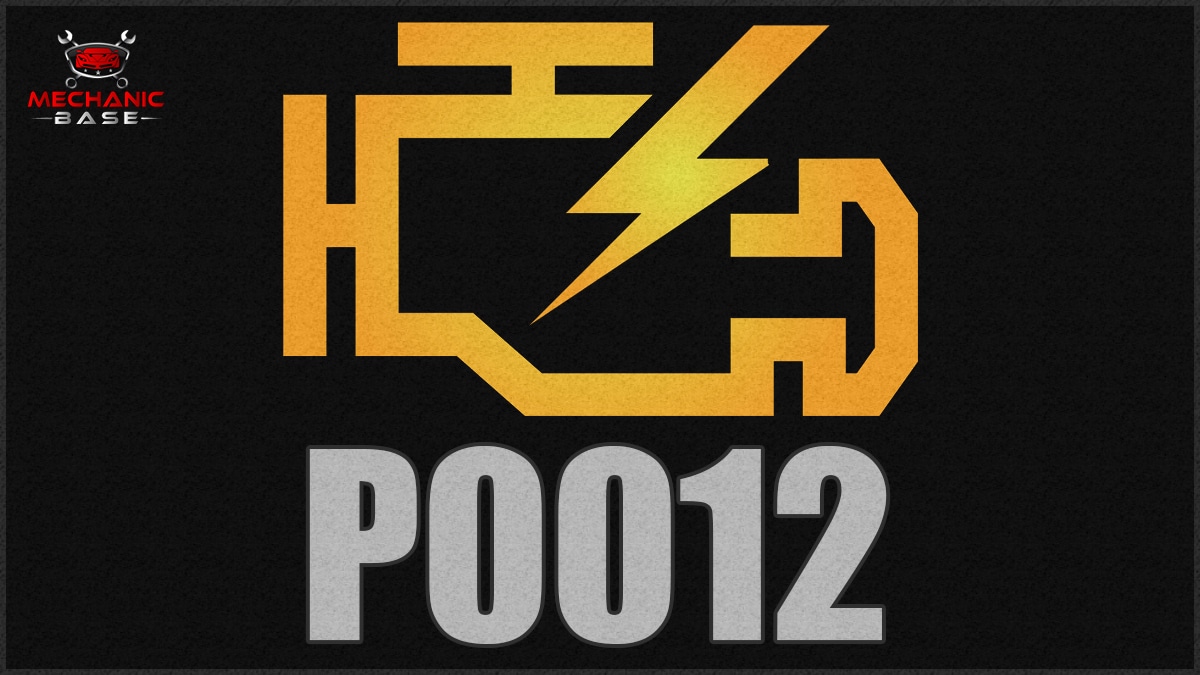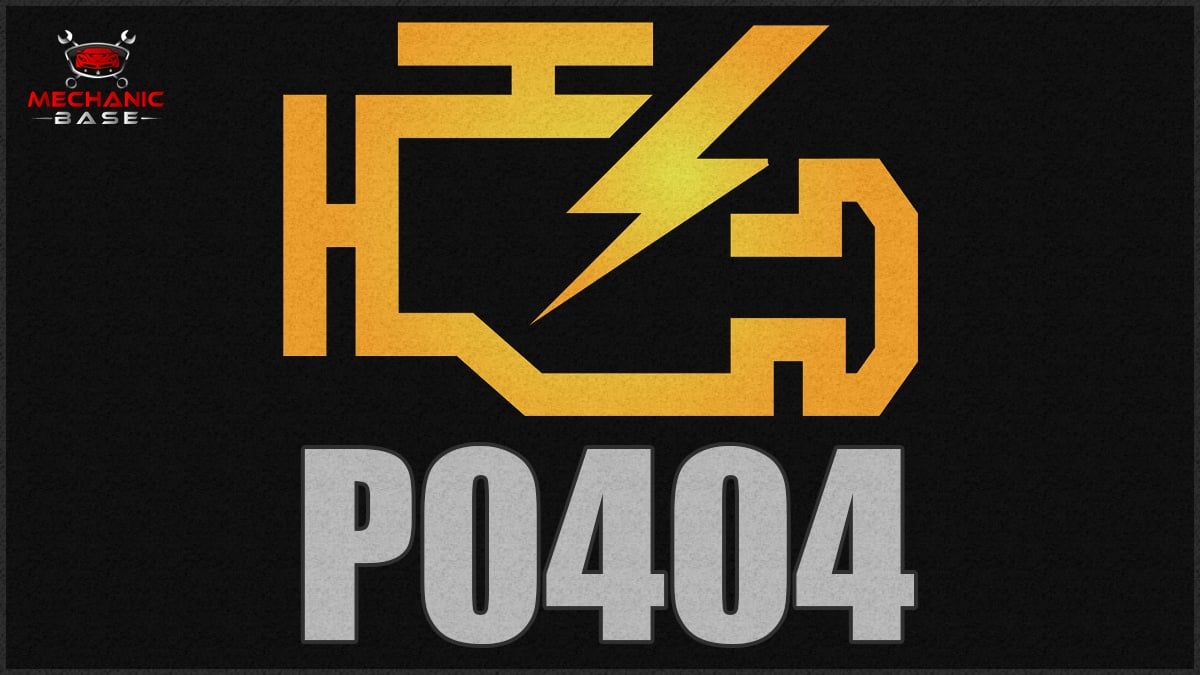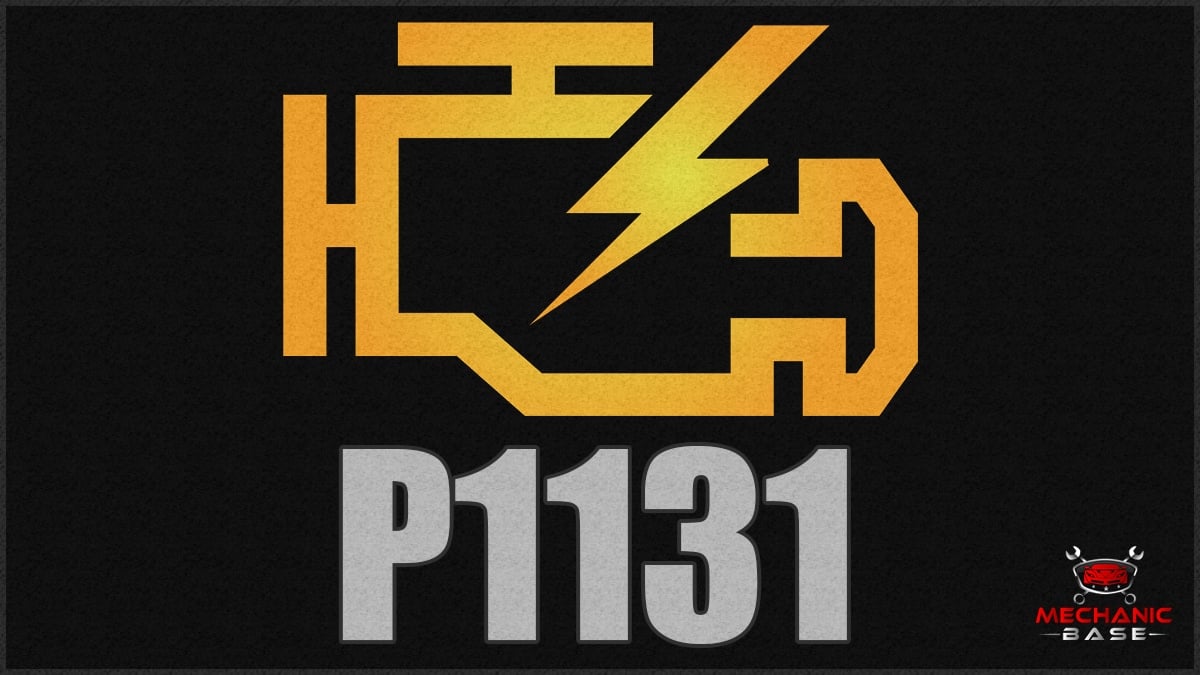Your Check Engine Light shines on the dashboard of your Ford vehicle and you are alarmed. You have every reason to be because without knowing the meaning of this Ford trouble code, you are left in the dark. Thankfully, we have the information on the P1450 Ford code, so you don’t have to wonder what’s wrong.
We discuss the definition of this DTC and show you what symptoms it causes. We also look at what creates the code and evaluate how to fix it. Before you leave, you’ll have a deeper understanding of the P1450 trouble code on your Ford vehicle.
Code P1450 Ford Definition
P1450 – Unable To Bleed Up Fuel Tank Vacuum
What Does the P1450 Code Mean On A Ford?
The P1450 code on a Ford shows that the PCM detected an issue with the vacuum pressure in the fuel tank or the EVAP system. The term “bleed up” describes the inability to maintain a specified amount of vacuum while the engine spins faster than idle RPMs.
This code occurs and the light turns on when the abnormal vacuum is detected for over sixty seconds.
The P1450 trouble code meaning is unique to Ford Motor Company, so it can be found on Ford, Lincoln, Mercury, and Jaguar models. For the P1450 meaning for other car brands, see our other guide: P1450 Code – Meaning, Causes, Symptoms & How To Fix
What is the EVAP system? The Evaporative Emission Control System (EVAP) prevents gas vapors from escaping out of the fuel tank and system at all times. A system includes the fuel tank, the EVAP vapor storage canister that contains charcoal, hoses, valves and the fuel tank gas cap that keeps fumes inside. The EVAP system has been a requirement for all gas-powered vehicles since the 1970s.
What Are The Symptoms Of P1450 On A Ford?
You won’t notice many symptoms of the P1450 trouble code. Unlike most trouble codes, you aren’t going to get a long list of problems that occur with this fault. Instead, you may only see the Check Engine Light.
Here’s the total list of what may happen.
- Check Engine Light
- A delay in start-up after filling the gas tank (rare)
What Are The Causes of P1450 On A Ford?
The P1450 code shows a problem with the Evaporative Emission Control (EVAP) or fuel system. For this reason, there can be a number of causes leading to the problem. Here are some of the most common.
- Blocked EVAP canister
- Bad EVAP vent solenoid
- Malfunctioning tank pressure sensor
- Stuck fuel filler cap
- A collapsed hose between the fuel tank and canister
- Loose or leaking gas cap
- Electrical short
There’s also a rare chance that there’s something wrong with the electronic control unit (ECU) that is responsible for setting the trouble code. However, if the ECU is bad or needs an update, you will usually notice other strange occurrences at the same time.
How Serious is the P1450 Ford Code?
Low – With the P1450 Ford trouble code, there aren’t usually any symptoms and it doesn’t affect drivability. Therefore, there’s no reason to worry about driving while this code is on.
However, there are a couple of reasons why you should still have it fixed. For starters, the failure could result in added emissions to the environment. Not only will this cause your car to fail emissions testing, but it isn’t good for the environment.
Secondly, while the light is on, there’s no way of knowing if another problem is occurring that could be damaging. Driving without this information is unwise and could cost you in the long run.
How Do I Fix the P1450 Ford Code?
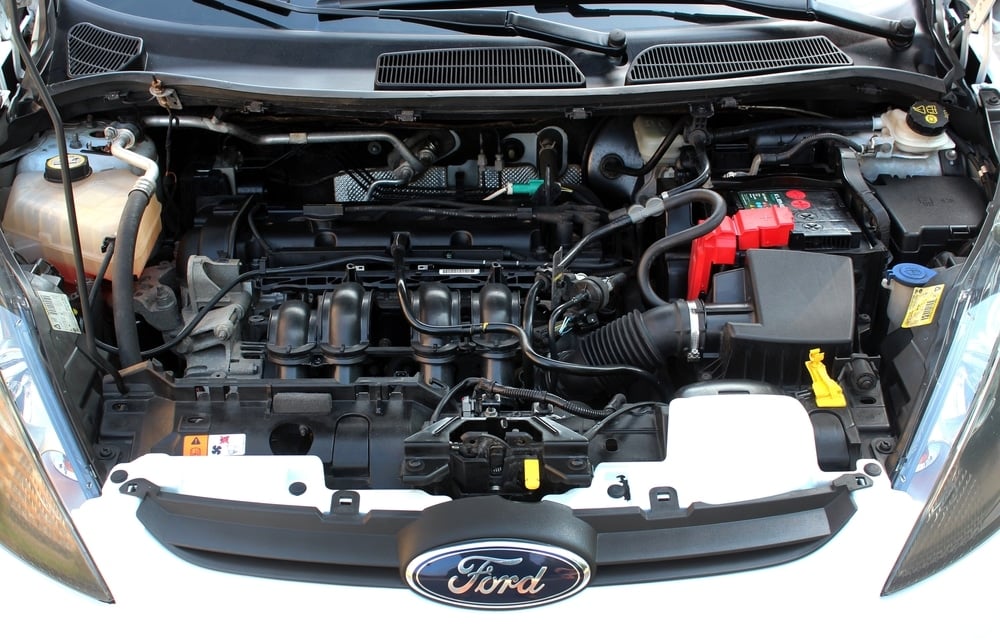
The only way to determine an appropriate fix for this Ford trouble code is to go through the diagnostic steps outlined in your service manual. We offer some tips below.
Here are the most common fixes found through diagnostic testing.
- Replace EVAP canister
- Replace EVAP vent solenoid
- Replace tank pressure sensor
- Replace fuel filler cap
- Replace hose between the fuel tank and canister
- Repair electrical short
Common P1450 Diagnosis Mistakes
Professional technicians often jump to conclusions when inspecting the system with the P1450 code. It’s easy to replace parts without performing the right diagnostic steps first. Oftentimes, parts get replaced that weren’t bad to begin with.
While it takes a little time to diagnose the fault, it’s important to take it seriously. After all, you don’t want to spend money on needless parts that don’t fix the problem.
Sometimes the P1450 code is just something as simple as forgetting to turn off the engine the last time you filled up the car. This will act as an EVAP leak, and in most cases the code will clear on its own.
How to Diagnose the P1450 Trouble Code On A Ford?

We have a few simple steps to follow when looking at what’s causing the P1450 trouble code. This is what we would do as professional mechanics.
- Check the system for other codes. If other trouble codes are present, use our DTC library to see if they are related. It’s possible these codes will help you figure out the problem.
- Check the gas cap and make sure it is properly tightened and not leaking.
- Examine the EVAP system, looking for faulty wiring and loose connectors. If you find anything bad, replace it or fix it.
- Examine the EVAP system for defective lines or hoses and replace them.
- Test the purge control valve control unit circuit for resistance, connectivity and continuity. Compare these readings to the service manual specifications.
- With a compatible scanner, you can verify that the vent valve is opening and closing as it should.
- If everything else seems in order, the vent valve has a connecting tube that could be blocked. Replace this tube.
- Inspect the charcoal canister for any signs of damage. If debris falls out while shaking it, you should replace it.
- Make a smoke test of the EVAP system to find any EVAP leaks.
If after these steps, you don’t find the problem, you may need more support. We suggest reaching out to a local mechanic that has more understanding of this problem. You may even want to talk to a Ford dealership since they probably see this code more than any other mechanic.
How Much Does It Cost To Fix Code P1450 On A Ford?
The cost to repair your Ford vehicle depends on what is wrong with it. Once you’ve walked through the steps we’ve outlined, you may know what needs to be repaired. Here are a few estimates for you to consider, including both parts and labor.
- Replace EVAP canister – $350 to $500
- Replace EVAP vent solenoid – $75 to $350
- Replace tank pressure sensor – $225 to $375
- Replace fuel filler cap – $15 to $45
- Replace hose between the fuel tank and canister – $100 to $375
- Repair electrical short – $50 to $550
If you can replace these parts yourself, you may be able to save some money.
A Mechanic’s Tips About The Ford P1450 Code
These problems seem to be common in Ford vehicles. So much so that there have been multiple Ford Technical Service Bulletins illustrating the problem to mechanics.
If your vehicle is still under warranty without this code, it’s best to visit the dealership for support. Point out one of the bulletins to help them complete the fix faster.
Is code P1450 serious on a Ford?
No, the trouble code indicates that there was a problem with the vacuum in the fuel tank or EVAP system. Either way, it’s unlikely to cause drivability concerns. The only symptom you may notice is the Check Engine Light, but you should still repair the vehicle as soon as possible.
How do I fix error code P1450?
The first step is figuring out what’s wrong. You need to repair or replace the fault that is found. To fix this code, you may need to replace the EVAP canister, the EVAP vent solenoid, the fuel filler cap, the fuel tank pressure sensor or the hose between the canister and tank. There could also be an electrical short that needs to be repaired.
Can I drive with a Ford P1450 code?
You shouldn’t have any trouble driving with the Ford P1450 trouble code in the system. Other than the Check Engine Light, you may not notice any problems. However, the car will likely fail emissions testing until you fix it and you won’t be able to turn off the light until it’s resolved.
What will be the effect of a clogged EVAP valve?
There should be minimal symptoms from a clogged EVAP valve. The Check Engine Light will come on and the car may fail emissions testing. However, drivability and performance should remain the same since these problems don’t hinder engine function.
What causes a bad purge control valve?
The purge control valve can go bad with time. The older it gets, the more likely it is to fail. Additionally, any damage to the wiring or the connectors in the system can cause the valve to fail. A complete diagnosis of the system is required to figure out what went wrong and how to fix it.
There’s no reason to panic if the P1450 code is set in your Ford vehicle. While the Check Engine Light is something to take seriously, this code in itself isn’t dangerous to your vehicle. Instead, it relates mainly to the emissions system, so you still want to take action. Until you get the problem resolved, the car will not pass emissions testing and you are contributing to atmospheric damage.
The other problem is that the Check Engine Light isn’t going away on its own. If something more serious fails while you are waiting to fix this trouble code, you won’t know about it. In that case, more damage could occur while you put off the repair that’s needed. That’s why we always recommend fixing a car as soon as the Check Engine Light comes on, even if it’s not causing performance issues.
Tags: Ford
Categories: OBD Codes
